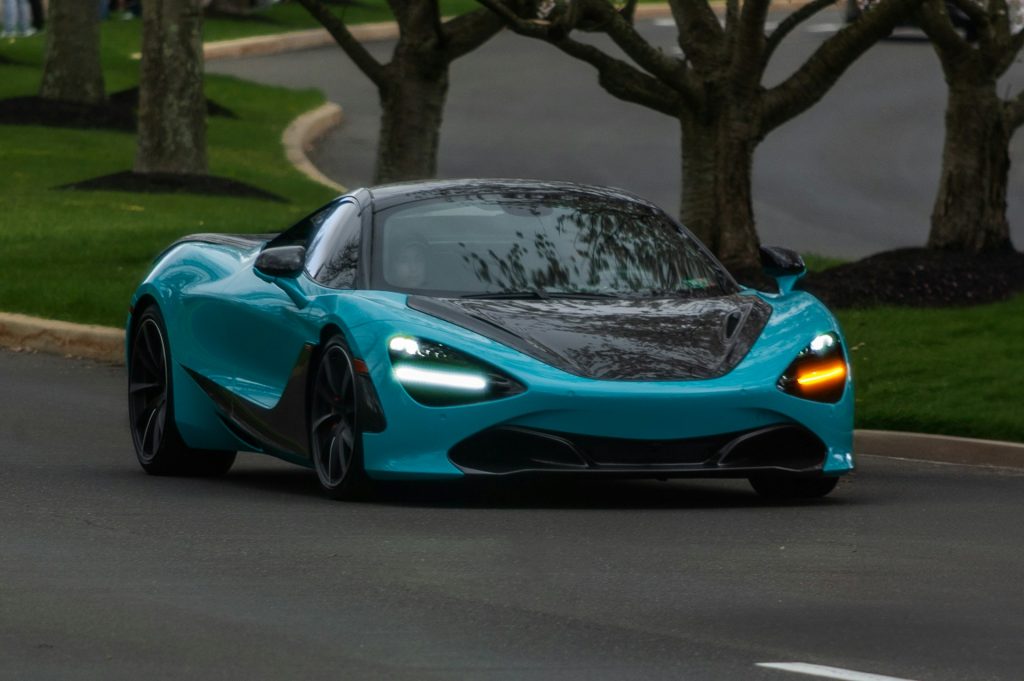Starting from £254,320, McLaren’s latest supercar, the 750S, brings a refreshing approach that avoids hybridization in favor of reduced weight and enhanced driving purity. A successor to the celebrated 720S, the 750S embodies McLaren’s commitment to performance and precision without the added complexity of electrification—a unique stance in an industry increasingly moving towards hybrid technologies.
Maintaining McLaren’s Core DNA Amid Industry Changes
The 750S enters the market following significant developments at McLaren. In recent years, McLaren introduced the Artura, a hybrid model that faced initial challenges but has now been refined, contributing to the company’s growth. Senior leadership shifts since 2022 have stabilized, and additional shareholder funding has been secured, setting McLaren on a steady path. While plans to venture further into luxury and lifestyle vehicles remain, McLaren now approaches these goals with renewed confidence.
At the same time, the 750S honors the legacy of the 720S with an enhanced focus on mid-engine design, lightweight construction, and driver engagement. While many competitors like Ferrari and Lamborghini incorporate plug-in hybrid technology for added power, McLaren stands apart by intensifying the focus on lightness, control, and driving agility. This decision positions the 750S as a purist’s supercar.
A Driver’s Machine: Optimized for Lightweight Performance
The 750S opts out of hybridization entirely, a contrast to rivals from Italy. This choice preserves the traditional McLaren experience, emphasizing simplicity and dynamic feedback. The goal is to deliver a car that feels responsive, agile, and powerful without the extra weight and complexity associated with electric systems.
With an enhanced 4.0-liter twin-turbo V8 engine producing 740 horsepower, the 750S generates more power than its predecessor while remaining under the 1400kg threshold, according to McLaren’s official weight figures. Selectable options can bring the curb weight below 1300kg, a notable achievement when compared to Ferrari’s hybrid 296 GTB, which weighs close to 1500kg.
Design and Features: Purposeful Refinement
In appearance, the 750S embraces a sharper and more assertive design. Up front, a lengthened splitter sits beneath aggressive headlights framed by sunken air intakes, which contribute to cooling and aerodynamic efficiency. Larger intakes along the sills and rear arches ensure the engine remains well-cooled, while a new rear deck and an expanded wing enhance the car’s aerodynamic downforce.
An additional weight reduction comes from a stainless steel, center-exit exhaust system, which not only trims the weight by about 30kg from the 720S but also adds a more vocal and dramatic exhaust note. However, some of these weight reductions were offset by additional components in the test model, bringing it to around 1412kg when measured with a partial tank of fuel. Despite this, the car remains notably lighter than its primary hybrid rivals, confirming McLaren’s emphasis on reduced weight as a key advantage.
Performance Highlights and Limitations
The 750S shines in its precision handling, quick steering response, and robust braking performance. On the track, it delivers exhilarating control, powered by a turbocharged V8 that feels both powerful and reactive. However, McLaren’s decision to prioritize handling has led to firmer suspension settings, which may feel slightly rigid on public roads.
Some drivers may also find that the car’s raw power output can occasionally overpower its traction on the track, making it a bit challenging to maintain grip in certain conditions. Nonetheless, the 750S caters directly to those seeking a driver-centric, high-performance supercar, making it a compelling choice for enthusiasts.
Available Configurations and Customizations
The 750S lineup offers no standard trim levels but includes multiple customization options, such as carbon fiber exterior elements, extended Alcantara interiors, and the premium TechLux interior for a luxurious feel. The model lineup also includes options like the GTS Coupe with 626bhp starting from £179,260, the Artura Coupe and Spider with 691bhp starting from £202,660 and £222,760, respectively, and the 750S itself in Coupe and Spider forms at 740bhp, priced at £246,655 for the Coupe and £269,160 for the Spider.
Pros and Cons: A Clear-Cut Driving Experience
Pros
- Sharp, engaging steering and handling
- Robust braking performance for track use
- Powerful V8 with an intensified sound and performance edge
Cons
- Stiffer suspension makes road driving less smooth
- Lacks the outright performance punch of hybridized supercars
- Track grip can sometimes be challenging to maintain
A Lean, Driver-Focused Supercar for the Modern Era
Overall, the McLaren 750S asserts itself as a supercar with an unyielding focus on lightweight performance and driving engagement. It is McLaren’s answer to a market that increasingly prioritizes hybrid systems by doubling down on simplicity and driver appeal. Although it may not match hybrid models in raw power, the 750S’s precise handling, striking design, and clear emphasis on weight reduction make it a distinctive choice for those who value the art of driving
